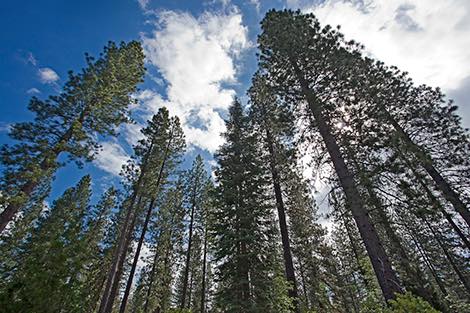Forests are key to climate: Response to “To Save the, Planet, don’t Plant Trees, NYT Sep. 19, 2014
By Laurie Wayburn, President and Co-CEO
 N. Unger (To Save the Planet, Don’t Plant Trees, September 19, 2014) is right about the complexity of climate science and the cocktails of chemicals that affect global warming. But she is wrong in her conclusions.
N. Unger (To Save the Planet, Don’t Plant Trees, September 19, 2014) is right about the complexity of climate science and the cocktails of chemicals that affect global warming. But she is wrong in her conclusions.
Forest loss and degradation is the second largest source of CO2 emissions, and the source of 30+% of net “excess”, human-emitted CO2 in the atmosphere today. Unger’s reasoning suggests that forests were not essential in creating a safe atmosphere for human evolution (which, of course, they were).
Following Unger’s logic, the potential albedo and Volatile Organic Compounds (VOCs) she warns of would have created an unsafe atmosphere long ago. But those forests did produce the oxygen we rely on, and their VOC production is simply part of the background norm in a healthy atmosphere. It’s well documented that tropical forests attract and hold cloud cover, which reflect heat and sunlight; if anything they have a reverse albedo effect. Further, temperate forests, due to the earth’s shape, are basically albedo-neutral. If boreal forests were removed to create a white surface, not only would it cause carbon emissions for loss of forest carbon, it would release massive GHG emissions from soils.
Forests not only sequester carbon and provide oxygen, they also capture, clean and regulate our water, are the home for an amazing array of essential biodiversity, and provide shelter and sustenance for humans. We rely on them for all these functions.
While fossil fuel emissions are the largest current source of CO2 emissions, we started racking up forest carbon emissions much earlier with deforestation.The deforestation of virgin forests in the Pacific Northwest alone (coastal California, Oregon and Washington) released billions of tons of CO2 into the atmosphere in the last 200 years. And, we are still causing emissions from forest loss in the US; we lose twice as many acres of forest to development as any other land type every year. The US Climate Action Report (2014) warns that forest loss in the US is a serious continuing threat to carbon sequestration in the next decades. With the cycling time of carbon (thousands of years) the majority of forest emissions are still in the atmosphere.
Not using good forestry and forest conservation to reabsorb some of those emissions now, as well as prevent further emissions from deforestation, is just wrong. We need to reduce emissions at their source as quickly and as much as possible. California’s AB 32 is demonstrating one way we can credibly do this. Unger’s fear of exculpating other CO2 pollution sources through forest conservation and restoration is misplaced. We need to address every source of emissions as quickly and effectively as possible. Yes, we must reduce fossil fuel emissions, but we must also recognize that forests are a huge and essential part of the solution.
